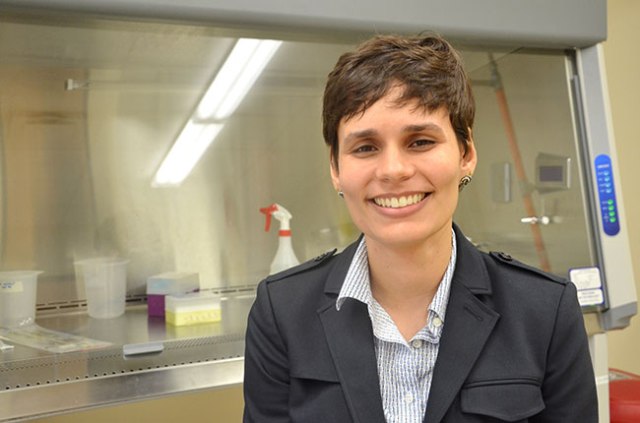May 27 2015
A Texas A&M AgriLife Research engineer and a Florida colleague have developed a biosensor that can detect listeria bacterial contamination within two or three minutes.
 Dr. Carmen Gomes, Texas A&M AgriLife Research engineer, College Station, said she has developed a biosensor chip that can detect listeria bacteria in a food sample in two to three minutes. (Texas A&M AgriLife Communications photo by Robert Burns)
Dr. Carmen Gomes, Texas A&M AgriLife Research engineer, College Station, said she has developed a biosensor chip that can detect listeria bacteria in a food sample in two to three minutes. (Texas A&M AgriLife Communications photo by Robert Burns)
“We hope to soon be able to detect levels as low as one bacteria in a 25-gram sample of material – about one ounce,” said Dr. Carmen Gomes, AgriLife Research engineer with the Texas A&M University department of biological and agricultural engineering.
The same technology can be developed to detect other pathogens such as E. coli O157:H7, she said. But listeria was chosen as the first target pathogen because it can survive even at freezing temperatures. It is also one of the most common foodborne pathogens in the world and the third-leading cause of death from food poisoning in the U.S.
“It can grow under refrigeration, but it will grow rapidly when it is warmed up as its optimum growth temperature ranges from 30 to 37 degrees Celsius — 86 to 98 degrees Fahrenheit,” Gomes said. “This makes it a particular problem for foods that are often not cooked, like leafy vegetables, fruits and soft cheeses that are stored under refrigeration.”
Currently, the only means of detecting listeria bacteria contamination of food requires highly trained technicians and processes that take several days to complete, she said. For food processing companies that produce and ship large quantities of foodstuff daily, listeria contamination sources can be a moving target that is often missed by current technology.
For more, go here. http://today.agrilife.org/2015/05/22/real-time-listeria-biosensor-prototype/